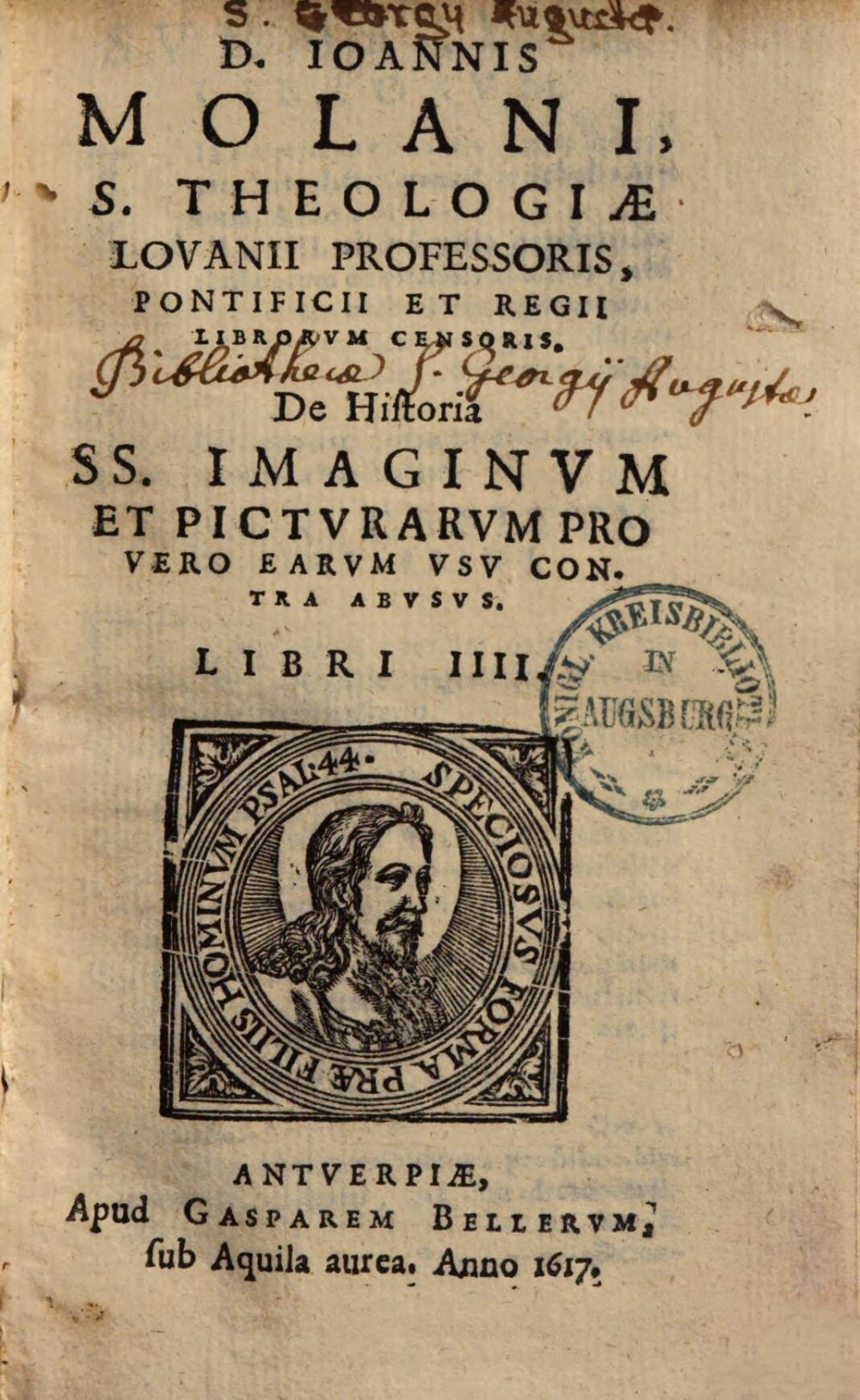
Augsburg, Staats- und Stadtbibliothek — Th H 1475. Digital Reproduction: München, Bayerische Staatsbibliothek, 2015.
In chapter 39 of book 2, Molanus reacts to the critique of Protestants and others on the Catholic practice of decorating altars with the images of Saints. He affirms that this is an ancient tradition and therefore allowed; in the preceding chapter Molanus discusses a similar question regarding the decoration of Churches, there he gives a much more extensive argumentation.
“As for the image which, it is said, Paul and Macair intended to place on the altar at the time of the sacrifice, it was profane if not heretical. ‘Indeed, when this reached the ears (of the Catholics), they were shocked; and the minds and tongues of all were stirred’, as Optat writes [at the end of Book III of his work on the schism of the Donatists]. So François Bauduin suspects that it was an image of the lauded emperor, and therefore a profane image, that Macarius would have received from the emperor. But no one suspected that it was perhaps the sacred image of some saint, which Catholics would have refused to allow to be on the altar at the time of the sacrifice, for the reason that the latter is offered to God alone. Such an idea cannot come to mind, because since ancient times altars were decorated with the images of saints, as, among others things, can be proven by the words of the Patriarch Tarasius during the seventh synod.”
“Prophana postremo fuit imago, si non haeretica, quam Paulis et Macarius dicebantur in altario posituri tempore sacrificii. ‘Hoc enim cum acciperent aures, (Catholicorum) perculsae sunt et animi et lingua uniuscuiusque commota’ ut scribit Optatus. Suspicatur autem Franciscus Balduinus fuisse Laureatam, sive prophanam, Imaginem Imperatoris, à quo missis erat Macarius. Nemo autem suspicetur imaginem hanc fuisse fortassis sacram alicuius sancti, quam Catholici in altario habere noluerint tempore sacrificii, eo quod hoc soli Deo offeratur. Tale nihil cogitandum est, nam vetustatem sanctorum imaginibus altaria ex ornasse, inter alia probari potest ex Tharasii Patriarchae verbis in 7. Synodo.”
Molanus 1996, 235.



